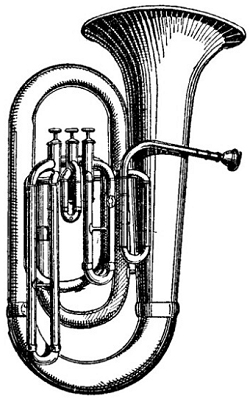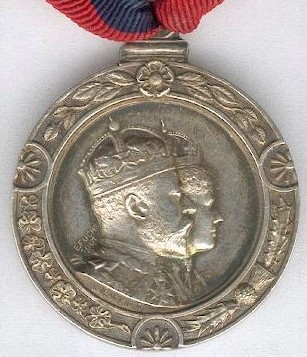Non-Coronation celebrations
The coronation of King Edward VII and Queen Alexandra was originally scheduled to take place on 26 June 1902. Elaborate preparations had been made and foreign dignitaries had gathered, but a last-minute medical emergency forced the pomp and pageantry to be postponed. Just two days before the big event, Edward ended up on a table in Buckingham Palace’s Music Room, where surgeon Sir Frederick Treves performed an operation to drain his Majesty’s abdominal cyst.

Although the coronation itself could not proceed as planned, Edward insisted that this should not prevent regional celebrations (and the serving of special dinners to 500,000 of London’s poor) from going ahead. It was in these circumstances that somewhat muted celebrations took place in Shropshire. Let’s return to the Wellington Journal of 28 June 1901:
Committee members, music, and medals
What a great line-up of local talent on the organising committee for these celebrations! Two clergymen (Lyttleton Vernon Yonge and John Bayley Davies), a clergyman’s wife (Elizabeth Mary Hombersley Yonge, née Groucock), five farmers (William Jervis, Bernard Morrison Needham, John Shakeshaft – who was also a corn and coal merchant, Richard Allen, and Henry James Jones), a butcher (Alfred Henry James), a carpenter and wheelwright (Alfred Ridgway), a shoemaker (Samuel Thomas Bennett), a railway platelayer (Samuel Woolley), and a former tailor who became the local relieving officer and registrar of births and deaths (William Abraham Richard Ball). All were enumerated at Waters Upton on the census of 1901 – I have hyperlinked each of their names to their household’s entry on my abstract of that census.
As for the Waters Upton Brass Band, how I wish I could find out more about it. I think it likely that the band’s musicians were drawn not just from Waters Upton but also from neighbouring villages and hamlets too. The band leader, for example, was almost certainly the John Davies who was master of Crudgington School from around 1880. The earliest mention of the band I have found so far was in the Wellington Journal of 8 June 1889. The paper reported that “The Waters Upton Brass Band, under the able leadership of Mr. John Davies,” marched as part of a procession celebrating the anniversary of the Waters Upton lodge of Oddfellows.
Almost certainly this was “the Tibberton and Waters Upton Brass Band” which headed a similar procession four years later (Shrewsbury Chronicle, 16 June 1893) and “the Cold Hatton brass band, which played selections on the ground, Mr. J. Davies conducting” at a parish church bazaar held at Waters Upton in 1901 (Shrewsbury Chronicle, 7 June 1901). After playing at the Coronation celebrations in 1902, and leading another Oddfellows’ procession to Waters Upton church the following year (Shrewsbury Chronicle, 19 June 1903), the last reported ‘gig’ for the Waters Upton Brass Band, conducted by Mr Davies, appears to have been a fund-raising event for parochial work at Crudgington in 1904 (Shrewsbury Chronicle, 24 June 1904). The John Davies whose death at the age of 62 was registered in the first quarter of 1906 at Wellington, was very likely our band leader.
Something else I’d love to know is whether any of the Coronation medals issued to the children of Waters Upton have survived, perhaps in the possession of their descendants? (An example of a Coronation medal – not necessarily representative of those issued at Waters Upton as designs varied – is shown here.) Mrs. Rider of Crescent House, Wellington, who supplied the medals, did not live in the village but through her late husband Dr John Rider – a descendant of the Wase family of Waters Upton Hall, had connections to it. Both Mr and Mrs Rider were buried in Waters Upton churchyard.
A second celebration
This story of Coronation celebrations at Waters Upton in 1902 is not quite over. The King and Queen were finally crowned, following Edward’s recovery, on the ninth of August – and his subjects could mark the occasion with unmuted merriment.
The fact that the reconvened Coronation was scheduled for a Saturday was not entirely welcome. The editor of the Wellington Journal opined in his newspaper on August 2nd, that “It would be difficult, we fancy, to imagine a more awkward time to celebrate the King’s Coronation than on a Saturday, for in nearly every town in England this is a very busy day, and one on which shopkeepers are apt to rely in making up for a probably cash deficiency on the other days of the week, and when the working classes do most of their shopping.”
The parishioners of Waters Upton responded to the potential problems of a Saturday celebration by holding their second Coronation ‘do’ on the following Tuesday. The Reverend Yonge once again chaired the organising committee and made his grounds available, and William Ball reprised his role as “the energetic hon. secretary and treasurer.” The day’s events were similar to those of the original Coronation celebrations, with some elements missing but others added – and with a note of sadness regarding the health of the Rector, as the Wellington Journal of 16 August reported:

Picture credits: Edward VII and Alexandra, adapted from a public domain image at Wikimedia Commons. Tuba from Etienne Mahler at Flickr, public domain image. Coronation medal from Wikimedia Commons contributor Helensq; used under a Creative Commons licence. Coronation of Edward VII in Westminster Abbey from Library of Congress via getarchives.net; no known copyright restrictions.


